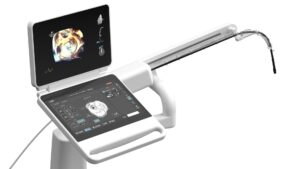
Laza Medical has announced the successful completion of its first software-only human cases at a US medical institution, marking the first time its real-time, artificial intelligence (AI)-based heart model has been evaluated alongside real clinical procedures.
The software operated concurrently during live cases to enable retrospective analysis and performance assessment, the company details in a press release.
Laza’s software constructs a patient-specific, 3D heart model in real time using ultrasound data alone. Validating this guidance software is a key step towards first-in-human testing of Laza’s complete intelligent robotic imaging system, the press release adds.
“As a cardiac imager, it’s exciting to see this kind of innovation entering clinical evaluation,” said Scott Chadderdon, head of cardiac imaging at Oregon Health Sciences University Hospital (Portland, USA). “There is a significant need for solutions that can help make high-quality imaging guidance widely accessible for structural heart procedures.”
“Having a live, echo-derived 3D model would give me consistent anatomical and spatial context throughout the case,” said Firas Zahr, head of interventional cardiology at Oregon Health Sciences University Hospital. “This study is an important first step in assessing this capability. Once this has been validated, layering in robotic control could unlock a whole new level of efficiency and autonomy.”
Laza’s technology is designed to address the complexity and high-resource burden associated with image-guided cardiac interventions. In structural heart and electrophysiology procedures, ultrasound imaging is essential but traditional systems tether experts to the machine, requiring constant manual input and years of specialised training, thus limiting patient access and placing a heavy burden on clinical teams.
Laza’s full platform will provide intelligent imaging assistance at every step of the procedure and ultimately pair its AI-generated heart model with robotically assisted transoesophageal echocardiogram control to close these imaging, procedural, and access gaps, the company’s press release states.









